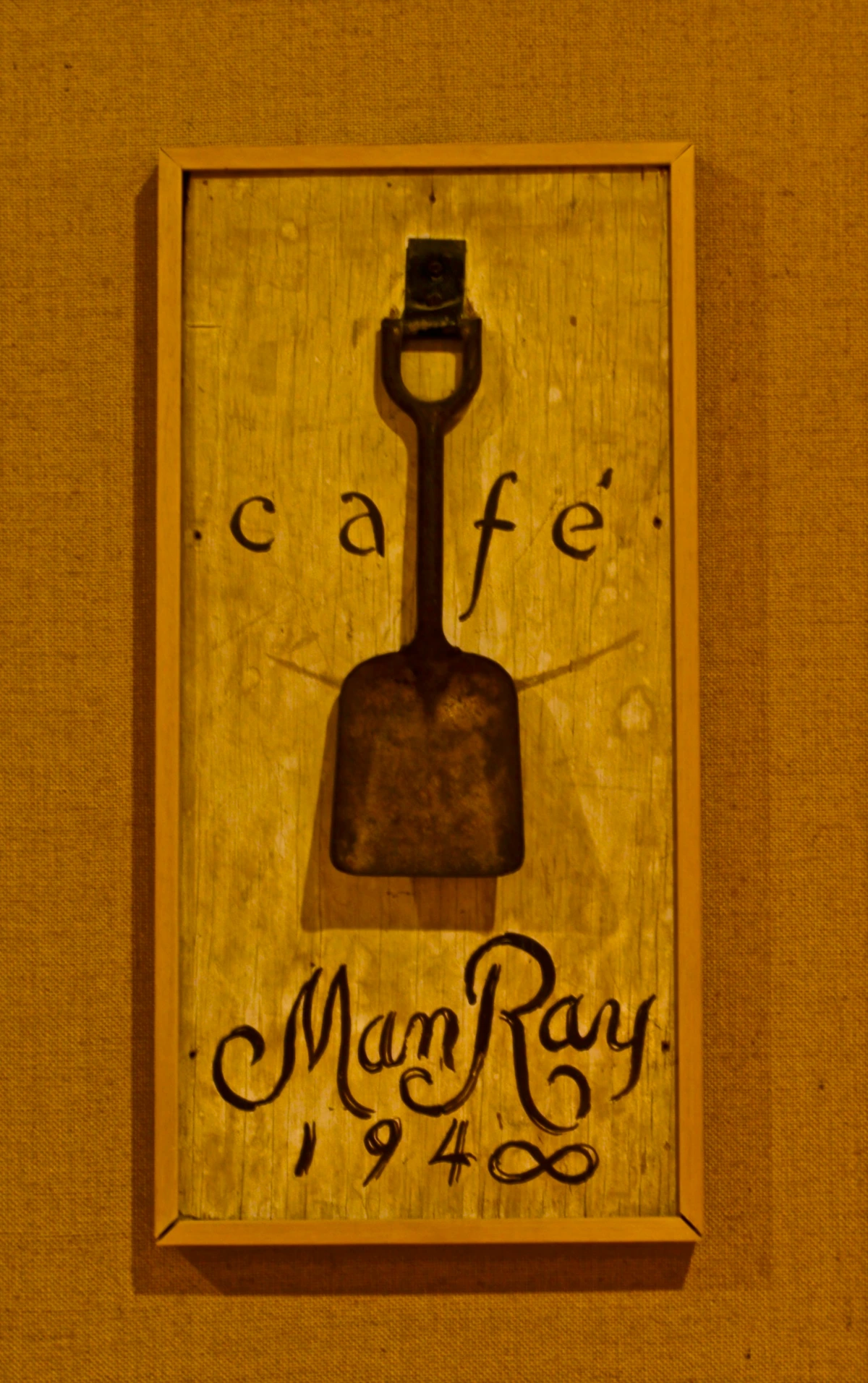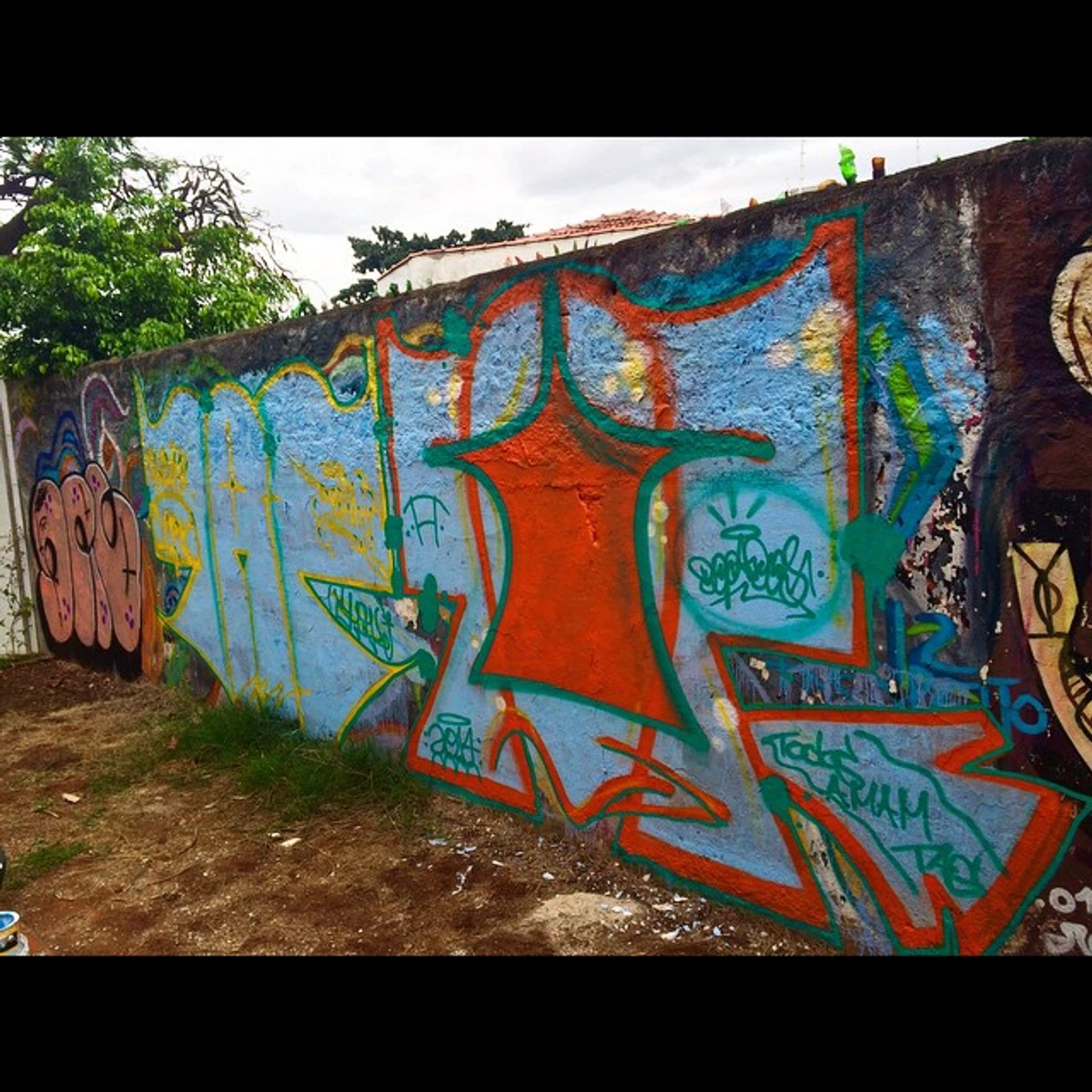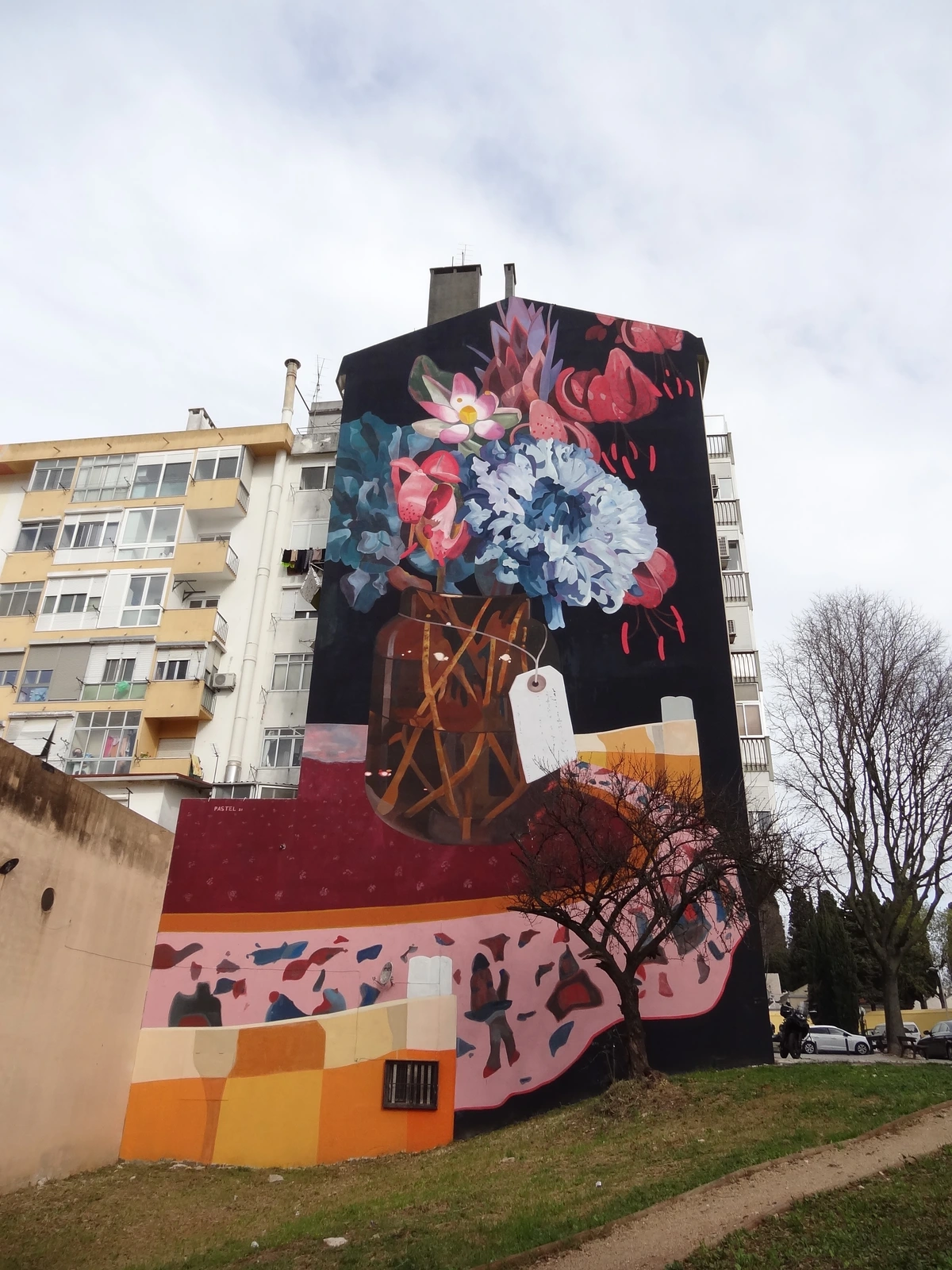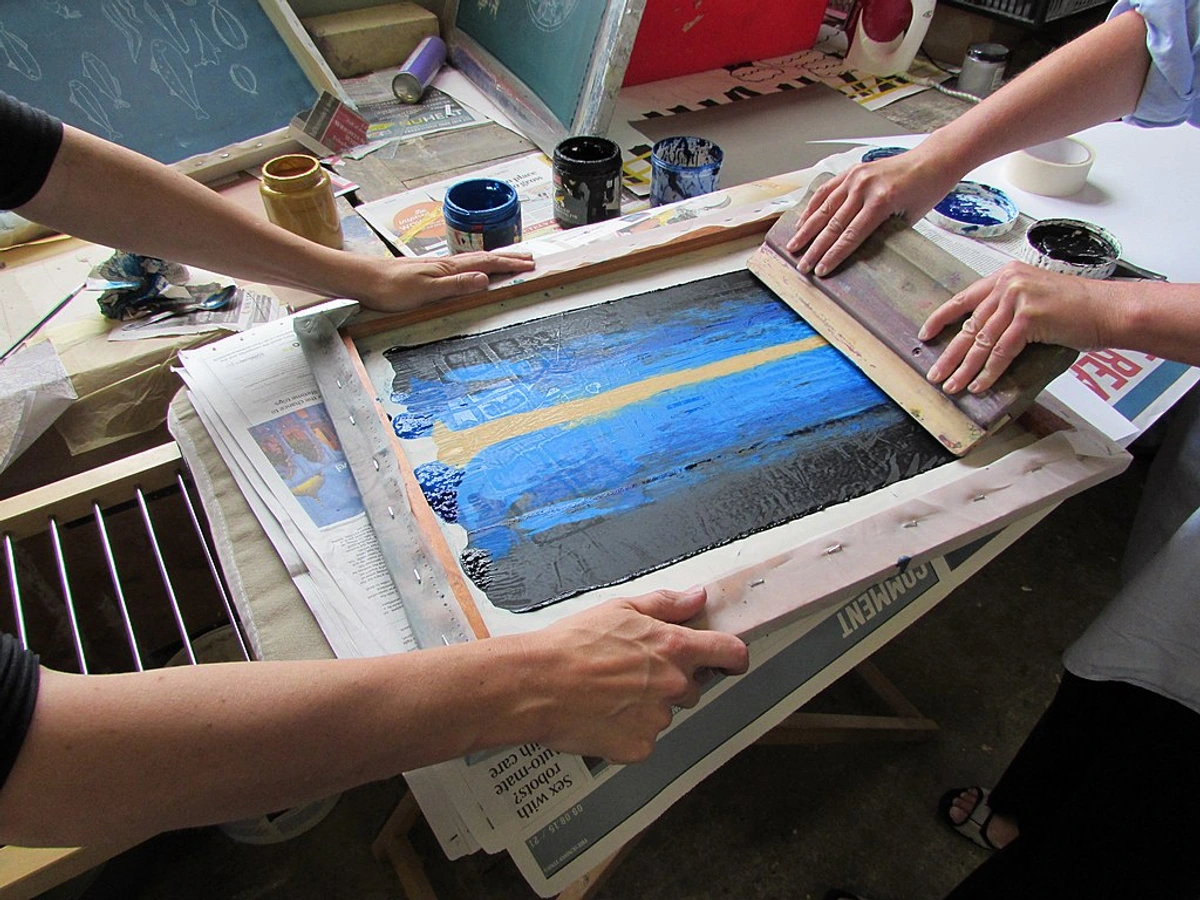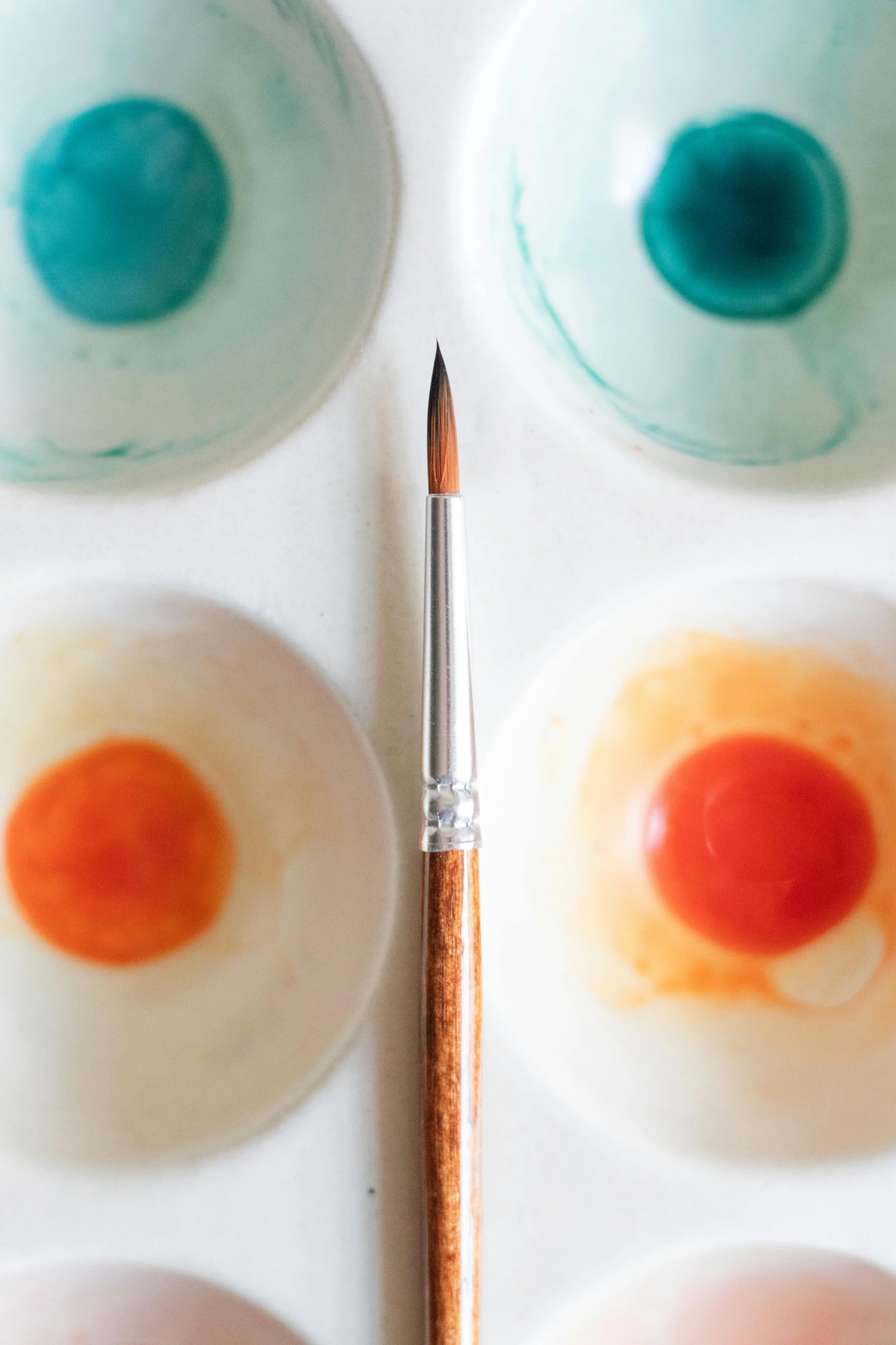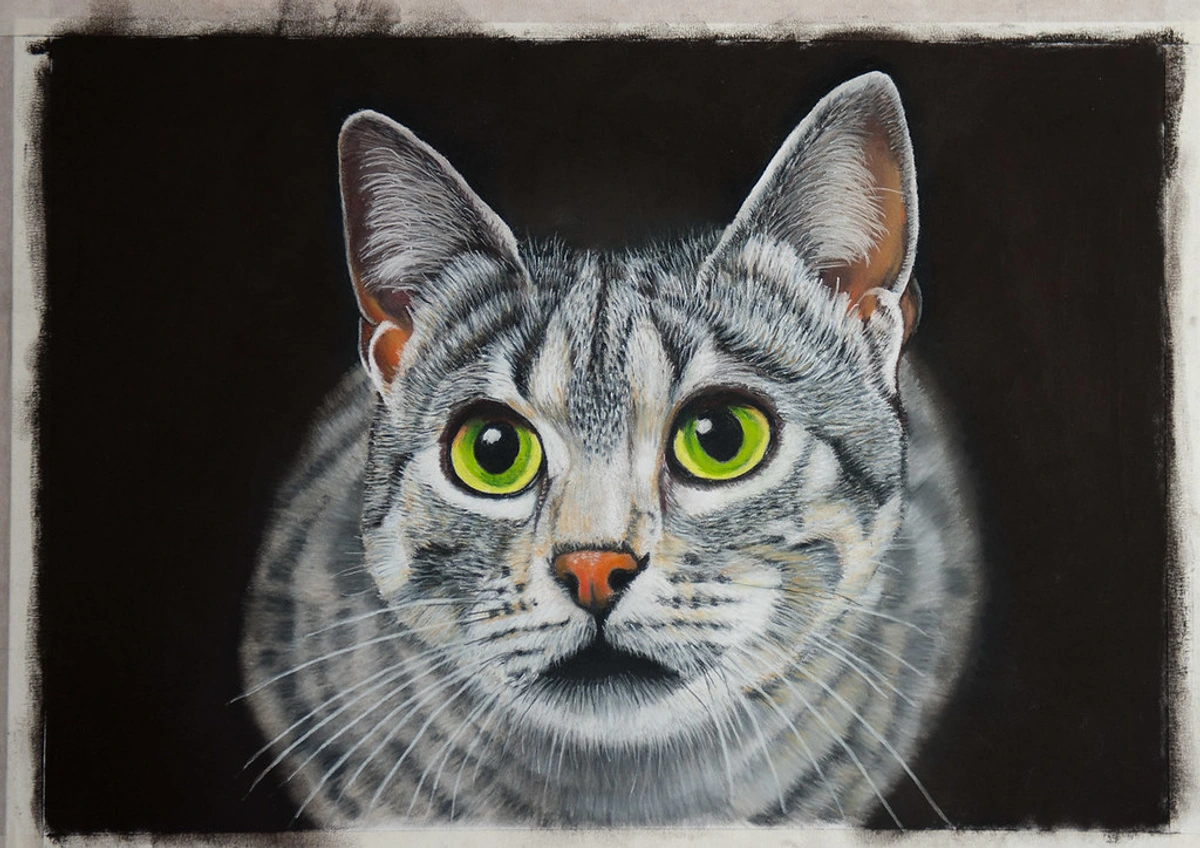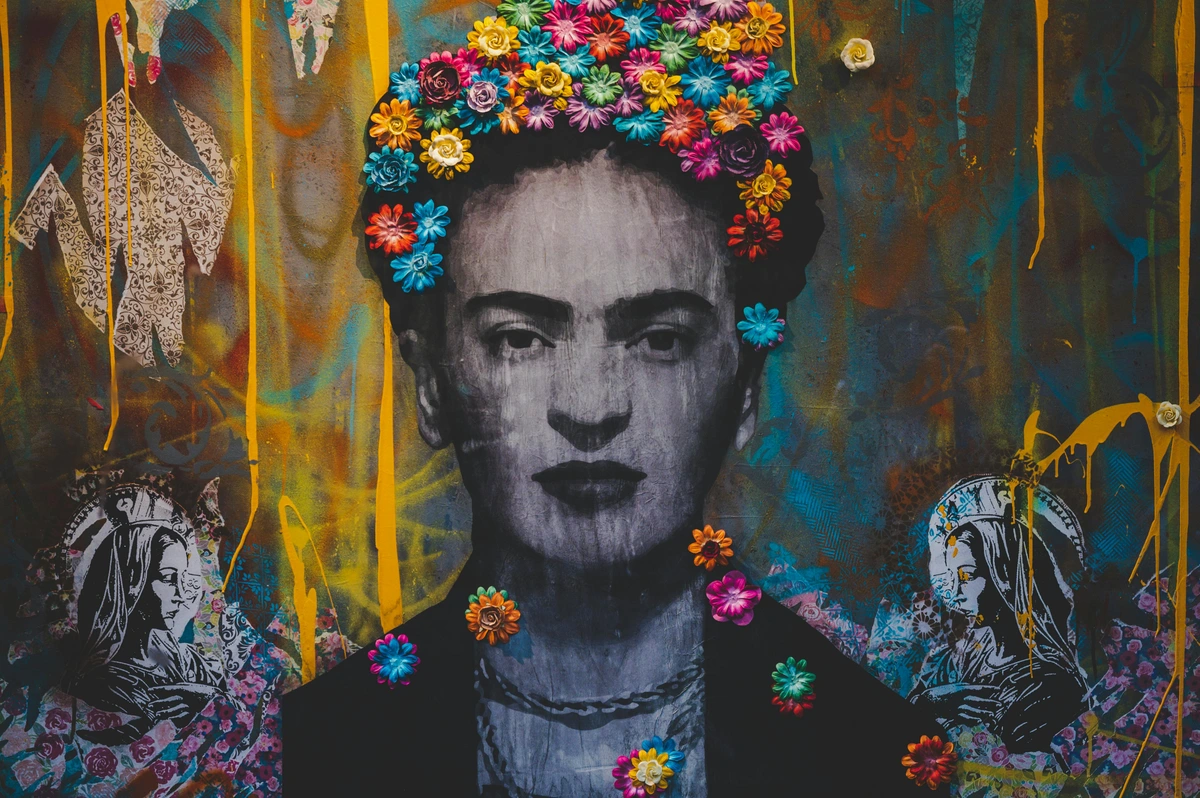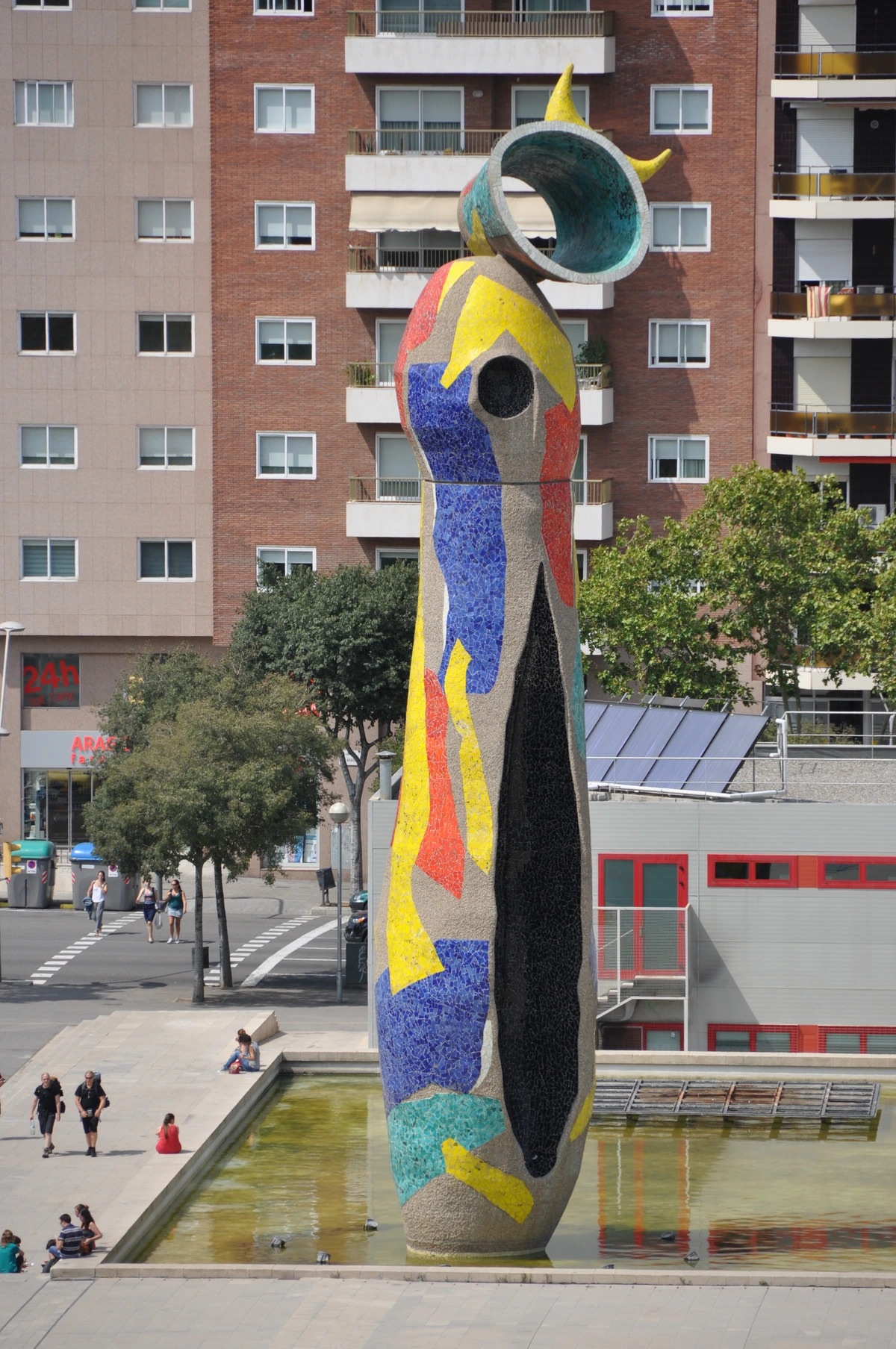
Unlocking Value: A Practical Guide to Licensing Your Art
Ever wondered how to turn your art into a sustainable income stream beyond direct sales? This comprehensive guide dives into the world of art licensing, sharing practical steps, personal insights, and crucial advice for artists looking to monetize their creative work through partnerships, royalties, and strategic agreements. Discover how I navigate this exciting landscape and empower your artistic journey.
Unlocking Value: A Practical Guide to Licensing Your Art – Transform Your Creative Passion into Enduring Prosperity
I remember vividly the moment I realized that selling a painting wasn't the only way my art could bring value, both to me and to the world. It was a bit of an epiphany, really. For so long, my focus was solely on the canvas, the brush, the immediate transaction – that singular moment of exchange. But then, the concept of art licensing gently nudged its way into my artistic consciousness, and honestly, it felt like unlocking a secret level in the game of being an artist. It transformed how I viewed my creative output, shifting from a one-and-done sale model to a dynamic ecosystem where a single piece could generate multiple, ongoing revenue streams and reach audiences I'd never imagined. I've often thought about how art, in its purest form, seeks to connect, to communicate, to resonate. Licensing simply amplifies that inherent purpose, allowing my visual narratives to reach far beyond the confines of a gallery wall or a collector's home. It’s an expansive opportunity that, frankly, many artists overlook, sticking to the traditional paths out of habit or fear. But what if those gallery walls were just the beginning?
Now, I know what you might be thinking: "Licensing? Sounds complicated. Lawyers, contracts, things I didn't get into art for!" And you wouldn't be entirely wrong. There are legalities, and there is a significant business side to it. I certainly felt that initial apprehension, wondering if I was veering too far from the pure act of creation. But what I've discovered is that with a clear understanding, a bit of strategic planning, and a reliable roadmap, it's not nearly as daunting as it first appears. In fact, it's an incredibly empowering way to expand your reach, diversify your income, and see your art thrive in unexpected places. Think of it: your unique creations on homewares, stationery, apparel, or even integrated into digital platforms. The possibilities are truly boundless – and incredibly exciting. It’s about leveraging the incredible value embedded in your unique creative vision, transforming those hours in the studio into something with far greater commercial reach and impact. And honestly, isn't it exhilarating to imagine your art living a multitude of lives?
So, let's dive deeply into what art licensing truly means, why I believe every artist should not just consider it, but actively pursue it, how you can start navigating this exhilarating, sometimes bewildering, but ultimately rewarding path, and what crucial steps to take to safeguard your creative future and build a sustainable career. This isn't just a guide; it's an invitation to redefine what's possible for your artistic journey, moving beyond the confines of a singular sale to embrace a universe of continuous creative commerce. It's about empowering you, the artist, with the knowledge to make informed decisions and build a robust, resilient artistic practice.
A Brief History of Art and Commerce: The Roots of Licensing
While the term "art licensing" might sound modern, the concept of artists granting permission for their work to be reproduced or used by others has roots stretching back centuries. It's a fascinating lineage, really, and recognizing it helps us understand the enduring nature of this commercial impulse in art. Think of the Renaissance masters who ran large workshops; their apprentices often created multiple versions of popular works, or even adapted elements for other patrons. This wasn't "licensing" as we know it, but it certainly involved the controlled dissemination and commercialization of artistic ideas. Patrons would commission copies, variations, or elements from a master's original, effectively expanding the reach and revenue generated by a single artistic concept.
Fast forward to the 18th and 19th centuries with the rise of printmaking. Artists would create an original painting, and then engravers would reproduce it as prints, making art accessible to a wider audience. The artist would often be compensated for the right to create these reproductions. This was a direct precursor to modern licensing, allowing art to move beyond unique, expensive originals. Imagine the impact of these reproductions; they weren't just copies, but a democratizing force, bringing art into more homes and expanding the artist's influence far beyond the elite few who could afford an original masterpiece. It truly set the stage for art's mass appeal.
What Exactly Is Art Licensing?
At its core, art licensing is simply granting permission for someone else to use your artwork for a specific purpose, for a specific period, and usually for a fee. Think of it like renting out your creative ideas, or perhaps loaning your artistic voice for a particular project. You, the artist, still own the original artwork and all associated intellectual property rights (IP), including the copyright (that crucial legal right that protects your original creations, by the way, and is automatically granted upon creation in many jurisdictions). What you're allowing another party to do is reproduce, display, or incorporate your art into their products or projects under clearly defined terms. This fundamental principle of separating the physical object from its intellectual rights is what makes licensing such a powerful, flexible, and often lucrative tool for artists.
It's a fantastic way to generate passive income from existing work, giving your creations a second, third, or even tenth life. Imagine a striking abstract pattern from one of my paintings adorning a line of high-end stationery, or a vibrant piece being used as the evocative cover for a best-selling book. Perhaps a whimsical illustration becomes a repeating motif on children's apparel, or a detailed botanical drawing transforms into a stunning wallpaper design. The possibilities are truly vast, and that's what makes it so exciting. It's about getting your work seen and valued in contexts far beyond the traditional gallery wall, expanding your reach exponentially. And frankly, it's a testament to the enduring appeal and versatility of your unique artistic vision.
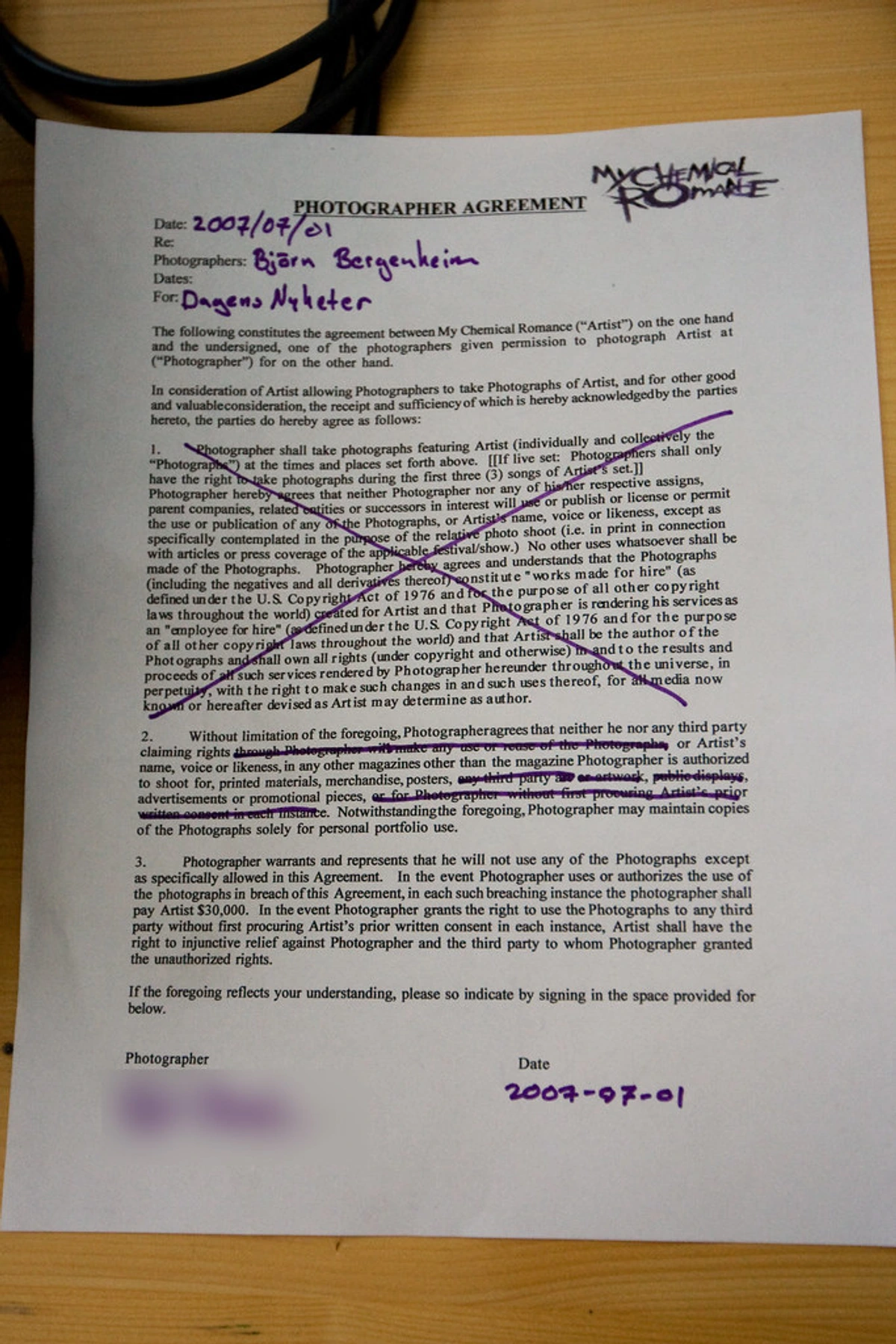
The Nuance of Intellectual Property (IP): Beyond Just Copyright
Before we go further, it's vital to clarify what we mean by Intellectual Property. In the context of art, IP primarily refers to creations of the mind—inventions, literary and artistic works, designs, symbols, names, and images used in commerce. It's the legal framework that safeguards your creative endeavors, ensuring you retain control and benefit from your ingenuity. The most relevant forms for visual artists are:

- Copyright: This is the legal right that grants the creator of an original work exclusive rights to its use and distribution. In many countries, copyright protection exists automatically from the moment the work is created, a wonderful little piece of legal magic, really! It protects the expression of an idea, not the idea itself. For example, the unique composition, colors, and brushstrokes of your painting are copyrighted, but the general concept of painting a landscape is not. Copyright is your fundamental shield in the world of art licensing, ensuring you control how your creations are reproduced and distributed. Ignoring it is like leaving your studio door wide open.
- Trademark: While less common for the artwork itself, a trademark protects names, symbols, slogans, or designs used to identify and distinguish your goods or services from others. If you develop a distinctive artistic brand name, a signature logo, or a recurring character that becomes synonymous with your work, you might consider trademark protection. This could be incredibly relevant if you're building a broader lifestyle brand around your art, transforming your artistic identity into a recognizable commercial asset.
- Design Rights: These protect the visual appearance or aesthetic features of a product. For artists, this could apply to unique patterns, ornamental designs, or the specific shape of a functional art object. While less frequently discussed than copyright for paintings, it's worth knowing about, especially if your art has a strong applied or functional dimension.
- Patents: These protect inventions, often functional designs or processes. For most visual artists, patents are rarely directly applicable to their artwork, as our focus is typically on aesthetic expression rather than novel utility. However, it's good to be aware they exist within the broader IP landscape, serving a different, but equally important, protective function.
The Difference Between Selling Art and Licensing Art: A Crucial Distinction
This is a fundamental distinction that often trips up new artists, and it's vital to grasp. I know it certainly confused me when I was starting out. Let's break it down simply:
When you sell an original piece of art, you're selling the physical object. The buyer owns that unique canvas or sculpture. However, unless explicitly stated otherwise in a separate agreement (which is rare in a typical sale and should be approached with extreme caution if ever proposed), you, the artist, still retain the intellectual property rights, including the right to reproduce that image. You've sold the thing, but not the right to copy the thing. It's like selling someone a car; they own the car, but they don't own the patent for making more cars.
With licensing, you're not selling the physical art itself. You're selling the permission to use an image of your art. It’s a subtle but powerful difference that protects your creative output and allows for ongoing revenue streams. This is the heart of why licensing is such a game-changer for building a sustainable artistic career.
Feature | Selling Original Art | Licensing Art |
|---|---|---|
| What's Transferred | Physical artwork (e.g., canvas, sculpture) | Right to use image of artwork |
| Ownership | Buyer owns the physical piece | Artist retains full ownership of artwork and copyright |
| Rights | Buyer can display, resell physical piece | Licensee can use image as per agreement |
| Artist Income | One-time payment for the physical piece | Royalties or flat fees for usage rights |
| Repeat Income? | Generally no (unless client commissions more) | Yes, from multiple licensees and renewals |
| Impact on Art | Original is no longer in artist's possession | Original remains with artist, can be sold separately |
Why I Believe Licensing is a Game-Changer for Artists
For me, licensing isn't just a revenue stream; it's a profound validation of my creative vision and a powerful way to share my art far more widely than I ever could through gallery sales alone. It's about building a sustainable, resilient career, something I talk about quite a bit on my journey from studio to sale, which you can read more about here.
Here are some of the key reasons why I think licensing is not just worth exploring, but a vital component for a contemporary artist's business:
- Diversified Income: Building a More Stable Foundation. Let's be real, relying solely on direct sales can be unpredictable, a true feast-or-famine cycle. I've certainly experienced those ebbs and flows in my own journey, where one month is abundant and the next leaves you wondering. Licensing offers a steady, sometimes remarkably passive, income stream that can smooth out these financial ups and downs. Imagine receiving royalty checks while you're focused on your next masterpiece, or while you're taking a much-needed break in nature, recharging your creative batteries. This financial stability empowers you to take more creative risks, experiment with new techniques, and invest back into your artistic practice without the constant pressure of chasing the next sale. It transforms your art from a series of singular transactions into a robust, multi-faceted business model, creating a true financial ecosystem around your creativity.
- Broader Reach & Exponential Exposure: Beyond the Gallery Walls. Your art could end up on products in national retail stores, featured in popular magazines, splashed across influential websites, or even integrated into television shows or films. This puts your work in front of entirely new, massive audiences who might never step foot in an art gallery. It's like having mini-exhibitions happening simultaneously all over the world, amplifying your message and artistic presence. I've often seen how a single licensed pattern on a product can lead to unexpected commissions or increased interest in my original works. It’s a virtuous cycle of visibility and opportunity.
- Broader Reach & Exponential Exposure: Beyond the Gallery Walls. Your art could end up on products in national retail stores, featured in popular magazines, splashed across influential websites, or even integrated into television shows or films. This puts your work in front of entirely new, massive audiences who might never step foot in an art gallery. It's like having mini-exhibitions happening simultaneously all over the world, amplifying your message and artistic presence. I've often seen how a single licensed pattern on a product can lead to unexpected commissions or increased interest in my original works. It’s a virtuous cycle of visibility and opportunity, where each licensed product acts as a tiny ambassador for your broader creative vision.

- Creative Fulfillment (in a new, exhilarating way): Seeing your abstract patterns seamlessly repeating on textiles, your vibrant colors adorning high-quality home decor, or your unique characters brought to life on children's books can be incredibly satisfying. It's a different kind of fulfillment than finishing a canvas, yes, but just as profoundly rewarding – a testament to the versatility and universal appeal of your artistic vision. It truly makes you think about the how artists use color in new, applied contexts, challenging you to see your work through a new lens. This kind of interaction with my art in a tangible, everyday product brings a unique joy that complements the solitude of the studio, making the creative process feel even more connected to the wider world.
- Building Your Brand & Artistic Legacy: Every Product, a Business Card. Each licensed product acts as a tiny, yet powerful, advertisement for you and your unique style. It reinforces your artistic presence in the world, building recognition and demand. Crafting your narrative is crucial, much like when you're working on the art of the artist statement. Licensing ensures your art travels, speaks for itself, and builds a lasting impression. Think of it: your signature style becoming recognizable on a global scale, subtly integrated into people's daily lives, turning everyday objects into touchpoints for your artistic vision. It's like leaving creative breadcrumbs all over the planet.
- Leveraging Existing Work: Maximizing Your Creative Assets. You've already poured your heart, soul, and countless hours into creating your art. Licensing allows you to gain further, ongoing financial benefit from pieces that might otherwise just be sitting in your studio or sold once, gathering dust or simply existing as a singular object. It gives your art a longer, more active commercial life, transforming individual pieces into valuable, generating assets. I often revisit older works, finding new ways for them to breathe and inspire in a licensing context – a new color palette, a different crop, a repeating pattern. This approach truly extends the journey of a painting far beyond its original creation, making every brushstroke a potential source of ongoing income.
- Creative Control & Preserving Your Artistic Integrity: Unlike outright selling your copyright (which is rare in true licensing scenarios, and something I'd generally advise against unless under very specific, highly lucrative terms), you maintain fundamental ownership of your intellectual property. This means you have a significant say in how your art is used, ensuring it aligns perfectly with your brand, vision, and values. It's a powerful way to manage your artistic legacy while still monetizing your creations, without compromising the essence of your work. I've found this aspect incredibly reassuring; knowing my art is out there but under my careful guidance, often requiring my approval on mock-ups and final products. This control is paramount, acting as a safeguard for your reputation and artistic voice.
- New Creative Challenges & Collaborations: Licensing often pushes you to think about your art in new ways—how a pattern repeats, how a motif translates to 3D, or how your style can enhance a brand's message. This can lead to exciting collaborations with designers, product developers, and other creatives, sparking new avenues for your artistic growth and pushing the boundaries of your practice. I once had to adapt a very textured piece into a seamless digital pattern, which required an entirely new approach to my usual process – a delightful challenge! These kinds of interactions often pull me out of my usual studio solitude and force me to innovate, which is a gift in itself. It's a constant process of learning and adapting, which for an artist, is pure gold.
The Landscape of Art Licensing: Where Does Your Art Fit?
The beauty of licensing is its sheer breadth and boundless possibilities. My abstract art, for example, might find a home on anything from greeting cards to wall decor. Yours could too! Understanding the different avenues is key to finding the right fit for your unique style, and it's often a process of delightful discovery. The world truly is an unending canvas for your creativity, and with licensing, you're merely finding new ways to apply your brushstrokes.
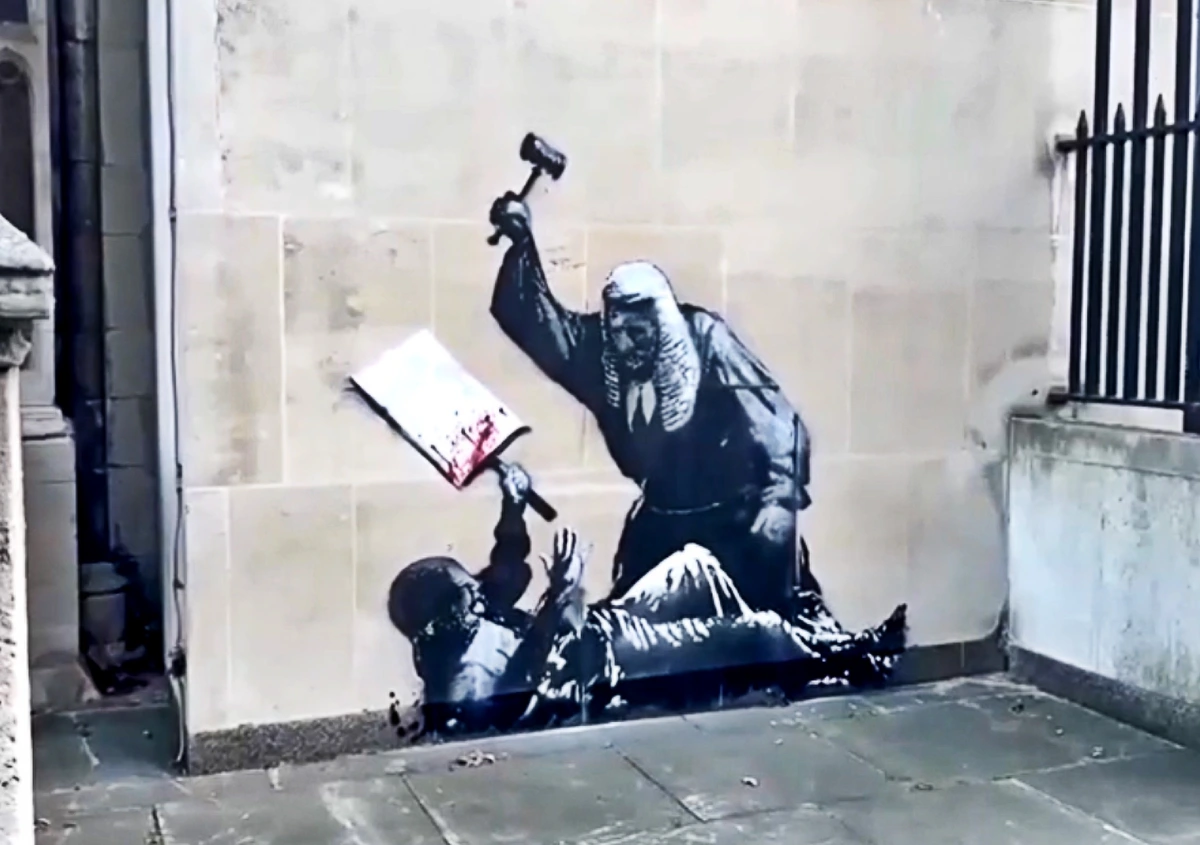
Common Product Categories for Licensed Art
This list isn't exhaustive, but it gives you a good starting point for imagining where your art could shine. I always encourage artists to think expansively; sometimes the most unexpected applications are the most successful!
Category | Examples | Key Considerations |
|---|---|---|
| Home Decor | Wall art (prints, canvases), textiles (pillows, throws, curtains), ceramics (mugs, plates), rugs, wallpaper | Appeal to broad tastes, repeatable patterns, cohesive collections. |
| Apparel & Accessories | T-shirts, scarves, bags, phone cases, socks, shoes, jewelry | Trend-driven, strong visual impact, adaptable to various garment types and materials. |
| Publishing | Book covers, magazine illustrations, calendars, journals, planners, digital books | Clear narrative or aesthetic, legible even at small sizes, often requires specific mood/theme. |
| Greeting Cards & Gifts | Cards, gift wrap, notebooks, puzzles, games, stationery sets, party supplies | Evokes emotion, strong standalone imagery, adaptable for different occasions. |
| Tech & Digital | Website backgrounds, app designs, screensavers, digital stickers, social media filters, emojis | Scalability, digital file formats (vector), animated potential, clean aesthetics. |
| Surface Design | Patterns for fabric, wallpaper, packaging, gift wrap, activewear, laminates | Seamless repeats, clear motifs, adaptable colorways, understanding of material properties. |
| Kids & Baby | Nursery decor, children's books, toys, apparel, party supplies, educational materials | Whimsical, bright, educational, safety considerations, age-appropriateness. |
| Editorial & Advertising | Art used in magazines, newspapers, online articles, commercial advertisements, branding campaigns | Often one-time use, strong conceptual connection, ability to convey a message, high impact. |
| Food & Beverage | Designs for coffee bags, wine labels, snack packaging, specialty food items | Visually appealing, evokes appetite or brand values, high-quality reproduction on various packaging materials. |
| Automotive & Interior | Graphics for car wraps, interior fabrics for vehicles, large-scale installations for commercial spaces | Durability, scale, aesthetic integration with functional design, compliance with safety standards. |
| Educational | Textbooks, educational apps, museum exhibit graphics, scientific illustrations, e-learning platforms | Clear, engaging, accurate visual communication, adaptable for various learning styles and formats. |
The range is truly astounding, and often, what starts as a single illustration can be adapted across multiple categories and product lines, revealing its incredible versatility. I remember seeing one of my abstract patterns, initially conceived for a large canvas, transformed into a series of beautiful ceramic tiles for a boutique hotel. It's these unexpected, yet perfectly aligned, applications that really thrill me and underscore the boundless opportunities in licensing! Sometimes you just need to open your mind to where your art could go, rather than where it traditionally has gone.

The Art of Adaptability: Making Your Work Licensing-Ready
One of the biggest lessons I've learned is that great licensed art isn't just a static image; it's a versatile visual language. It needs to be adaptable. This means thinking about your art not just as a finished piece, but as a collection of elements that can be reconfigured, recolored, or scaled without losing their essence. Can your brushstrokes become a pattern? Can a motif stand alone? This forward-thinking approach to your creative output is what truly unlocks its licensing potential. It's about seeing the inherent modularity in your masterpieces.

Crafting Your Licensing Strategy: Beyond the Basics
Before you even dive into preparing your portfolio or signing contracts, a crucial step is developing a clear licensing strategy. This isn't just about what you want to license, but how you intend to position your art and yourself in the market. It's like planning a journey; you need a destination and a route. Without a map, you're just wandering, and while wandering can be creatively stimulating in the studio, it's not ideal for business. This strategic phase is where you transition from pure artist to artist-entrepreneur.
3. Define Your Goals: Your Personal North Star
What do you hope to achieve with licensing? Is it purely passive income, or are you looking for brand exposure, creative collaborations, or a stepping stone to a different career path? Your goals will influence your approach to exclusivity, pricing, and the types of opportunities you pursue. It’s okay if these evolve, as mine certainly have, but starting with a clear intention is incredibly empowering. For me, it was initially about passive income, but it quickly evolved into a quest for broader artistic impact and collaborations, pushing the boundaries of what I thought my art could do. Knowing your 'why' will guide your 'how,' helping you make choices that resonate with your deepest artistic and business aspirations.
Navigating the How-To: Steps to Licensing Your Art
This is where the rubber meets the road, where the theoretical gives way to the practical. It might seem like a lot when you look at it whole, a daunting mountain of tasks, but breaking it down into manageable steps makes the process much clearer, much like how a large canvas becomes a masterpiece one brushstroke at a time. Let's get pragmatic about transforming your art into a marketable asset.

Step 2: Understand Different License Types
This is absolutely crucial for protecting your rights and ensuring fair compensation, and frankly, it's where many artists get tripped up if they're not careful. Licenses are rarely one-size-fits-all, and understanding the nuances is like learning the secret language of the industry. Here are the main types and considerations I encounter, and why each matters deeply for your artistic future:
- Industry Directories & Publications: Some industries have specific directories or magazines that list art buyers, manufacturers, and licensing agencies. These can be valuable resources for targeted outreach.
- Networking: Talk to other artists, join online communities (both in-person and virtual), and attend industry events. You never know where the next opportunity might come from, whether it's a direct lead or a recommendation.
Marketing Yourself as a Licensing Artist: Beyond the Art
Having a fantastic portfolio is only half the battle; you also need to effectively market yourself. It's like having a brilliant stage play but no audience – you need to get the word out! Think of it as developing a mini-brand around your artistic practice, much like when you consider what is design in art. This is about packaging you as much as your art.
Step 4: Crafting the Contract and Pricing Your Work
This is where things get serious, where the legalities come into sharp focus, and honestly, don't skimp on this part. A well-written contract is your shield and your guide, protecting your creative assets and ensuring you're fairly compensated. Think of it as the blueprint for your artistic business partnership. Neglecting this step is like building a house without a foundation.
The Licensing Agreement Checklist
I always make sure any contract I sign covers these points thoroughly:
- Identification of Parties: Who are you (your legal name, business name, address) and who is the licensee (company name, legal entity, contact person)? Clarity here prevents future confusion.
- Artwork Details: Specifics of the art being licensed (title, image file name, version, date of creation, unique identifier if applicable). Attaching a clear visual reference of the artwork is also often a good idea.
- Grant of Rights: What exactly is the licensee allowed to do? (e.g., reproduce, display, modify, adapt, distribute). Be incredibly granular here. Are they allowed to use it for promotional materials related to the licensed product? Can they sub-license?
- Scope of Use: This is a multifaceted point. It includes the exact product category (e.g., "greeting cards for birthdays," not just "greeting cards"), the specific territory (e.g., "United States only," "Worldwide excluding Japan"), the term (duration of the license), and whether it's exclusive or non-exclusive. Each of these variables dramatically impacts the value of the license.
- Payment Terms: This covers the royalty rate (percentage, the base upon which it's calculated – e.g., wholesale vs. retail price, and the payment schedule – e.g., quarterly, semi-annually), or the flat fee amount, and any advance payments. Crucially, it must also detail reporting requirements: how often will you receive sales reports, what information will they contain, and when are they due? This transparency is vital.
- Credit/Attribution: How will your name be displayed? (e.g., "Artwork by [Your Name]", "© [Your Name]"). Where will it be displayed? (e.g., on the product, on packaging, in promotional materials). This builds your brand.
- Quality Control: Your right to approve samples or final products at various stages of development (e.g., digital proofs, physical prototypes, final production samples). This is non-negotiable for preserving your artistic integrity and brand reputation. I always insist on this; nothing is worse than seeing your art poorly reproduced.
- Warranties and Indemnification: These are legal protections. You typically warrant that you own the rights to the art and it doesn't infringe on others' rights. The licensee often indemnifies you against claims arising from their use of the product. This protects both of you from legal disputes.
- Termination Clause: Conditions under which either party can end the agreement (e.g., breach of contract, non-payment, bankruptcy). It should also specify what happens to existing inventory and ongoing royalties after termination. This is your exit strategy.
- Governing Law: Which state or country's laws apply.
Pricing Your Art for Licensing: The Art of Valuation
This is often the trickiest, most nebulous, yet most crucial part of any licensing deal, and let's be honest, there's no single, universally "right" answer. It's fundamentally a negotiation, an intricate dance between perceived value and market demand, and it depends heavily on the scope of use, the licensee's reach, the product category, and your own experience and brand recognition. Don't be afraid to ask for what you're worth; your art is valuable, unique, and irreplaceable.
Factors I rigorously consider and encourage you to evaluate:
- Scope of Use: Is the license for a single country or worldwide? Is it for a single product (e.g., one book cover) or an entire product line (e.g., a collection of home decor items)? The broader the use (in terms of geography, product count, or duration), the significantly higher the price should be. Value grows exponentially with broader application.
- Exclusivity: As we discussed, an exclusive license means the licensee is the only one who can use that art for the defined purpose. This restriction on your ability to generate other income from that piece commands substantially higher fees. Non-exclusive licenses, conversely, will be priced lower per use.
- Industry Standards: Thoroughly research what others in your niche, with a similar level of experience and brand recognition, are charging. Industry-specific royalty rate guides exist (often shared in artist communities or trade publications). Don't try to reinvent the wheel, but also don't be afraid to push boundaries if your art truly stands out. Sites like Artsy or Saatchi Art can give you a general sense of fine art pricing, but licensing is a different beast.
- Company Size & Market Reach: A small independent brand operating locally will have a different budget and sales projection than a national or international retailer like Target or Amazon. Your pricing should reflect the licensee's potential sales volume and market penetration. A larger company with broader distribution should pay more.
- Your Brand Value & Artistic Recognition: As your reputation grows, as your art becomes more recognizable, so does your pricing power. A strong, distinctive artistic voice and consistent brand, which I've discussed in previous articles like finding my voice: the evolution of my abstract artistic style, commands higher fees. You're not just licensing art; you're licensing your art, with all its inherent brand equity.
- Your Time & Effort (Even for Existing Work): Even if it's existing art, there's time involved in preparing high-resolution files, creating mock-ups, reviewing samples, communicating with the licensee, and administrative tasks. Factor this labor into your flat fees or royalty rate expectations.
- Perceived Value & Market Demand: How unique and desirable is your art in the current market? Is it on-trend? Does it fill a specific gap? Art that is highly sought after or provides a unique solution to a licensee's creative needs can command premium pricing.
- Projected Sales Volume: For royalty-based deals, try to get an estimate of the projected sales volume for the product. A 5% royalty on 10,000 units is different from 5% on 1,000,000 units. This helps you assess the fairness of the royalty rate and any potential advance.
When calculating royalties, I often think about the retail price of the product and work backwards, considering what a fair percentage would be. For flat fees, I try to estimate the potential sales impact and demand a fair share of that perceived value. This isn't an exact science, but a blend of research, experience, and knowing your worth, along with a healthy dose of negotiation. It’s a dance, not a dictate.
Typical Royalty Ranges by Product Category
While every deal is unique, these are general ranges you might encounter:
Product Category | Typical Royalty Range | Notes |
|---|---|---|
| Greeting Cards | 5% - 10% | Often higher due to lower production costs and direct art focus |
| Fabric/Textiles | 3% - 8% | Can vary widely based on volume and distribution |
| Home Decor (Mugs, Pillows) | 5% - 10% | Depends on brand recognition and product price point |
| Apparel | 2% - 7% | Often lower due to higher production and marketing costs |
| Book Covers | Flat fee or 1% - 3% | Usually a flat fee for specific usage; royalties if art is central |
| Editorial Use | Flat fee | Typically one-time payment based on circulation/reach |
| Tech/Digital | Flat fee or 10% - 25% | Highly variable; can be higher for unique digital assets |
The Art of Negotiation
Remember, everything in a licensing agreement is negotiable. Don't be afraid to counter-offer on terms, fees, or exclusivity. A "no" simply means "not this way." Be polite, professional, and prepared to walk away if the terms aren't right for you. Your goal is a mutually beneficial partnership, not just any deal. Researching industry norms for royalty rates for artists is a crucial part of this preparation.

The Art of Negotiation: Don't Be Afraid to Talk
Remember, everything in a licensing agreement is negotiable. Don't be afraid to counter-offer on terms, fees, or exclusivity. A "no" simply means "not this way," and it opens the door for finding a better path. Be polite, professional, and prepared to walk away if the terms aren't right for you – your art and your business deserve a mutually beneficial partnership, not just any deal. Researching industry norms for royalty rates for artists is a crucial part of this preparation, arming you with objective data to support your asks. Never forget that you bring unique value to the table.
Building Your Licensing Team: Support for Your Creative Business
While much of licensing can be managed independently, a one-person show has its limits. There comes a point where a team can significantly amplify your efforts and safeguard your interests, allowing you to focus on your core genius – creating art. Think of these roles not as expenses, but as strategic investments in your long-term success, much like investing in high-quality paints or a sturdy easel. They are partners in your prosperity.
1. The Art Licensing Agent: Your Industry Navigator
- Role: Agents are specialists in the art licensing industry. They have established relationships with manufacturers, publishers, and retailers, acting as your dedicated sales and marketing arm. They actively market your portfolio, identify suitable opportunities, negotiate terms, and manage contracts and royalty statements, often saving you countless hours and potential headaches.
- Pros: Access to a vast network you couldn't build alone, expert negotiation skills, frees up your time to create (which, let's be honest, is what you'd rather be doing!), handles the often-daunting administrative burden. They often know the true market value of your work better than you might, ensuring you get fair deals.
- Cons: They take a commission (typically 30-50% of your licensing income), so you're sharing your revenue. Finding the right agent can be a lengthy and competitive process, as they are selective about the artists they represent.
- When to Consider: When you're ready to significantly scale your licensing efforts, feel consistently overwhelmed by the business side, or want access to larger, more complex deals that require established industry connections. A good agent is truly a partner, not just a service provider.
2. The Intellectual Property (IP) Lawyer: Your Legal Shield
- Role: An IP lawyer specializes specifically in copyright, trademark, and contract law relevant to creative works. They can review complex licensing agreements, advise on intellectual property protection strategies (including crucial copyright registration), and represent you in cases of infringement or dispute. They are your legal guardian in the commercial jungle.
- Pros: Ensures your contracts are legally sound and comprehensive, protects your fundamental rights, provides immense peace of mind, and can save you significant money and heartache in the long run by preventing costly errors. Think of it as a proactive investment rather than a reactive expense.
- Cons: Legal fees can be substantial, but consider it an essential insurance policy for your creative assets, much like you'd insure your studio or your home. It's a cost that often pays for itself many times over if it prevents a single legal misstep.
- When to Consider: For any significant licensing deal (especially those with exclusive rights or high revenue potential), for international agreements where laws vary wildly, or if you suspect infringement of your copyright. Seriously, never sign a major contract without legal review; it's a risk you simply shouldn't take with your artistic livelihood.
3. The Accountant/Financial Advisor: Your Fiscal Compass
- Role: An accountant specializing in artists or small businesses can help manage your licensing income, understand tax implications (especially with international royalties), track expenses, and advise on financial planning for a diversified income stream.
- Pros: Ensures tax compliance, optimizes your financial structure, helps you understand profitability.
- Cons: Fees.
- When to Consider: As soon as you start generating consistent licensing income, particularly if it involves multiple streams or international payments.
I firmly believe that investing in a good team, especially a lawyer for contract review, is one of the smartest decisions an artist can make when diving into licensing. It allows you to focus on your genius – creating the art – while professionals handle the intricate business and legal frameworks, ensuring your foundation is solid. It's an investment in your peace of mind and your longevity as a professional artist.
Global Reach: International Licensing Considerations
As an artist in the digital age, your art has the potential to reach markets far beyond your home country. This is incredibly exciting, truly a testament to the borderless nature of creativity, but it also introduces new complexities. Expanding globally means navigating different legal systems, cultural nuances, and financial frameworks, all of which require careful attention.
My Personal Takeaways and Common Pitfalls to Avoid
Over the years, navigating the intricate world of art licensing has taught me a few invaluable, sometimes hard-won, lessons and yielded many crucial insights. Licensing can be an incredibly rewarding path, a true game-changer for many artists, but like any significant endeavor, it's not without its challenges and potential missteps. I've certainly made my share of mistakes, and I hope by sharing them, you can sidestep some of the thorns on this otherwise beautiful path.
Don't Make My Mistakes! Essential Pitfalls to Sidestep
- Don't Rush the Contract (Seriously!): This is perhaps the most critical piece of advice I can offer, and one I learned the hard way. Seriously, read every single line, multiple times if necessary. If something isn't clear, ask for clarification immediately, and keep asking until you fully understand it. If a clause feels off, or if you have a nagging doubt, it probably is. Never, ever sign anything you don't fully comprehend or agree with. Consider getting legal advice from an intellectual property lawyer, especially for your first few significant deals; it's an investment that safeguards your future and prevents potential legal headaches down the road. A meticulous legal review is not a luxury; it's a necessity.
- Don't Undervalue Your Work: Know Your Worth. It's incredibly tempting to accept any offer, especially when you're just starting out or eager for a breakthrough. But consistently low-balling yourself sets a damaging precedent, not just for you, but for the entire creative industry. It devalues your unique artistic output and impacts your long-term earning potential. Do your research, understand market rates, and confidently articulate your worth. Remember, you're not just selling art; you're selling a piece of your creative soul and years of honed skill, much like the dedication it takes to find my creative flow:-embracing-intuition-in-abstract-painting. Your art has inherent value; don't give it away cheaply, and don't let insecurity dictate your pricing.
- Don't Forget About Quality Control: Your Reputation is at Stake. Your name, your brand, and your artistic integrity are intrinsically attached to that licensed product. If it's poorly manufactured, if the colors are inaccurately reproduced, or if the overall aesthetic is compromised, it reflects poorly on you, not just the licensee. Always, always ask for samples for your approval at various stages (digital proofs, physical prototypes, final production samples). This is your right and your protection, and a crucial step in maintaining your brand's reputation. Don't let someone else's corner-cutting tarnish your creative legacy.
- Don't Neglect Your Copyright: It's Your Ultimate Shield. Always use the
©symbol followed by your name and the year of creation on your digital files, on your website, and on any physical art. This is a clear declaration of your ownership. Furthermore, consider registering your copyright with the relevant national office (e.g., U.S. Copyright Office, Canadian Intellectual Property Office). While copyright exists upon creation, registration offers stronger legal standing, significantly more leverage, and broader recourse if infringement occurs, acting as a powerful deterrent and legal tool. This simple symbol, and the act of registration, are incredibly powerful tools that you must wield wisely.
- Don't Be Afraid to Say No: Trust Your Artistic Gut. Not every opportunity that comes your way is the right opportunity, and sometimes, a deal that looks good on paper might feel wrong in your gut. If a deal doesn't align with your values, your brand aesthetic, your long-term goals, or simply doesn't feel right, politely but firmly decline. Chasing misaligned opportunities can be a massive drain on your time, energy, and ultimately, your creative spirit. Protecting your artistic integrity and brand vision is paramount, even if it means sacrificing short-term gain for long-term alignment.
- Don't Overlook Meticulous Record Keeping: Your Business Backbone. Keep incredibly meticulous records of all your licensed work, every signed contract, every payment schedule, all communication with licensees, and all sales reports. This isn't just good business practice; it's absolutely essential for tracking your income, ensuring compliance with contract terms, and providing undeniable evidence if disputes or audits arise. Digital tools and cloud storage are your friends here; embrace them fully. Your future self (and your accountant!) will thank you.
- Don't Have Unrealistic Expectations: Cultivate Patience and Persistence. Licensing is rarely a sprint; it's a marathon that demands patience, persistence, and resilience. It takes time to build relationships, to negotiate deals, for products to go from concept to market, and for royalties to accumulate. Be patient, celebrate every small win, learn from every rejection, and understand that not every submission will turn into a deal – and that's perfectly normal. Consistency over intensity is the key here; keep showing up, keep creating, and keep learning.
Common Challenges in Art Licensing & How to Overcome Them
Navigating the world of art licensing isn't always smooth sailing. There are common hurdles artists encounter, much like those pesky creative blocks in the studio, and being prepared for them can make all the difference. Forewarned is forearmed, as they say, and with a little foresight, you can turn potential pitfalls into minor speed bumps.
Challenge | Description | Solution |
|---|---|---|
| Finding the Right Licensees | It can be difficult to identify companies whose aesthetic and product lines align with your art. | Targeted Research: Continuously research brands, product lines, and industry trends. Attend virtual or in-person trade shows. Follow art directors on social media. Build a clear ideal licensee profile. |
| Low Offers & Undervaluing Your Work | Licensees may make offers that seem too low, especially if you're new to the game. | Know Your Worth & Negotiate: Research industry standards. Understand your minimum acceptable terms. Be polite but firm in negotiations. Be prepared to walk away if the offer doesn't align with your value. |
| Contractual Complexities | Licensing agreements can be filled with legal jargon, making them intimidating and hard to understand. | Legal Counsel: Invest in an intellectual property lawyer to review significant contracts. Utilize contract templates from reputable artist organizations for smaller deals. Don't be afraid to ask for clarification on every clause. |
| Slow Turnaround Times | The process from initial contact to signed contract to product launch can take many months, sometimes years. | Patience & Pipeline: Cultivate patience. Maintain a robust pipeline of potential opportunities. Don't put all your eggs in one basket. Keep creating and marketing new work. |
| Managing Multiple Licenses | Tracking various agreements, payment schedules, and usage terms can become cumbersome. | Meticulous Record Keeping: Use spreadsheets, specialized software, or even a dedicated notebook to track every detail. Create a clear system for digital file management and contract archiving. |
| Infringement Concerns | The fear of your art being used without permission is a constant worry for many artists. | Proactive Protection & Vigilance: Register your copyright. Use digital watermarks. Regularly search for unauthorized use of your art. Send cease and desist letters (with legal advice) when necessary. The internet is vast, but tools exist to help monitor your work. |
| Creative Burnout | The business side of art can sometimes overshadow the joy of creation. | Balance & Delegation: Prioritize your creative time. Outsource tasks where feasible (e.g., photography, accounting). Remember why you create art and protect that sacred space. Consider an agent if the administrative burden is too high, allowing you to focus on my creative flow:-embracing-intuition-in-abstract-painting. |

Frequently Asked Questions About Art Licensing
Here are some of the most common questions I hear about art licensing, and my straightforward, no-nonsense answers. Think of this as a mini-consultation, a quick way to clarify some of the pervasive queries in this exciting field.
Q: What's an "advance" in licensing?
A: An advance is an upfront payment made to the artist against future royalties. It's essentially a guarantee that you'll receive at least that much, regardless of how well the product sells. The advance is then recouped by the licensee from the royalties earned. This means that you don't receive further royalty payments until the product's sales generate enough royalties to cover the advance. It's a fantastic way to get some upfront capital, especially if you believe strongly in the product's potential, but remember it's not a bonus; it's an early payment of what you would have earned later. It's a vote of confidence from the licensee, and a good way to get some cash flow early in the process.

